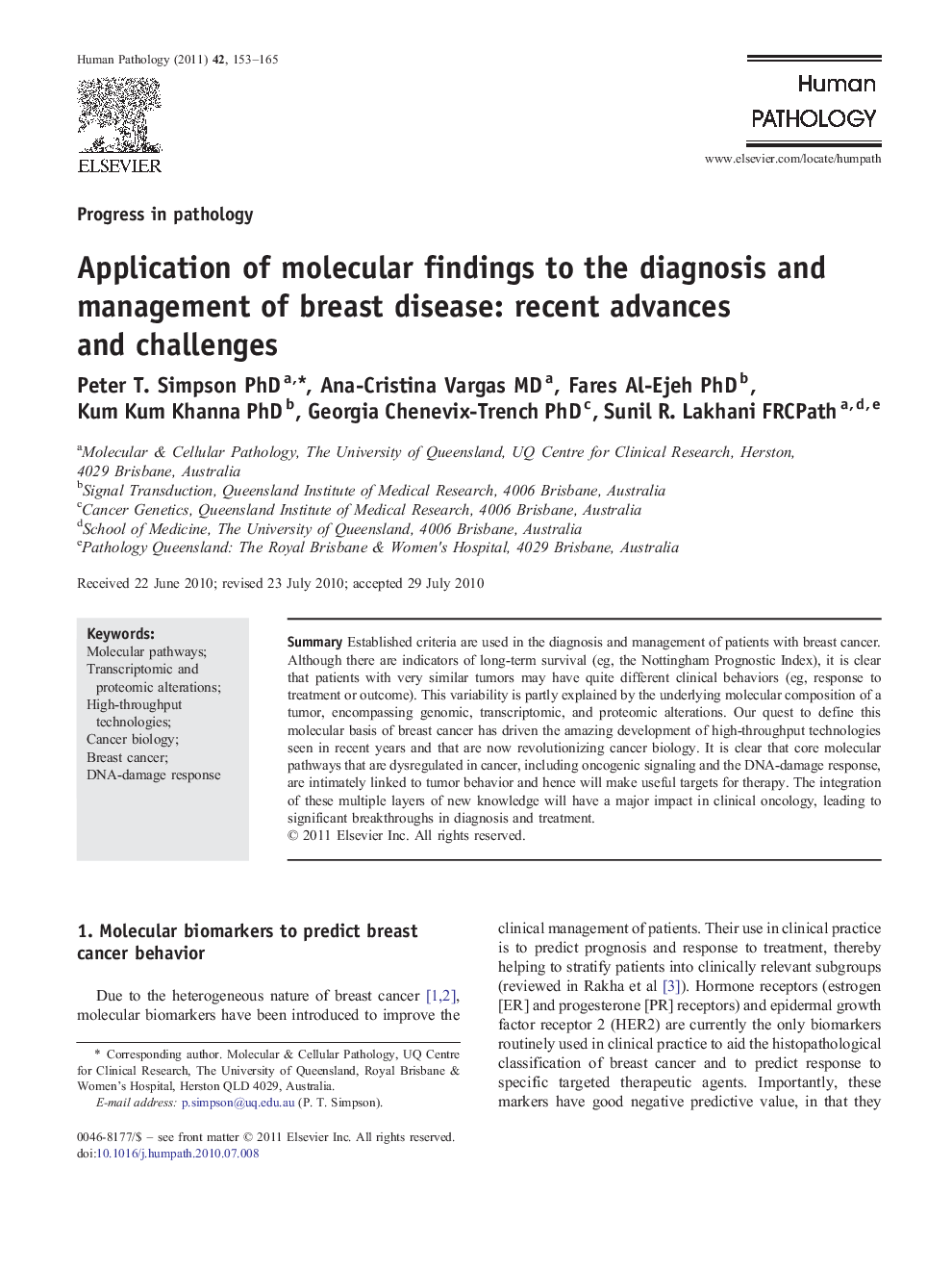| Article ID | Journal | Published Year | Pages | File Type |
|---|---|---|---|---|
| 4133768 | Human Pathology | 2011 | 13 Pages |
Abstract
Established criteria are used in the diagnosis and management of patients with breast cancer. Although there are indicators of long-term survival (eg, the Nottingham Prognostic Index), it is clear that patients with very similar tumors may have quite different clinical behaviors (eg, response to treatment or outcome). This variability is partly explained by the underlying molecular composition of a tumor, encompassing genomic, transcriptomic, and proteomic alterations. Our quest to define this molecular basis of breast cancer has driven the amazing development of high-throughput technologies seen in recent years and that are now revolutionizing cancer biology. It is clear that core molecular pathways that are dysregulated in cancer, including oncogenic signaling and the DNA-damage response, are intimately linked to tumor behavior and hence will make useful targets for therapy. The integration of these multiple layers of new knowledge will have a major impact in clinical oncology, leading to significant breakthroughs in diagnosis and treatment.
Keywords
Related Topics
Health Sciences
Medicine and Dentistry
Pathology and Medical Technology
Authors
Peter T. PhD, Ana-Cristina MD, Fares PhD, Kum Kum PhD, Georgia PhD, Sunil R. FRCPath,
